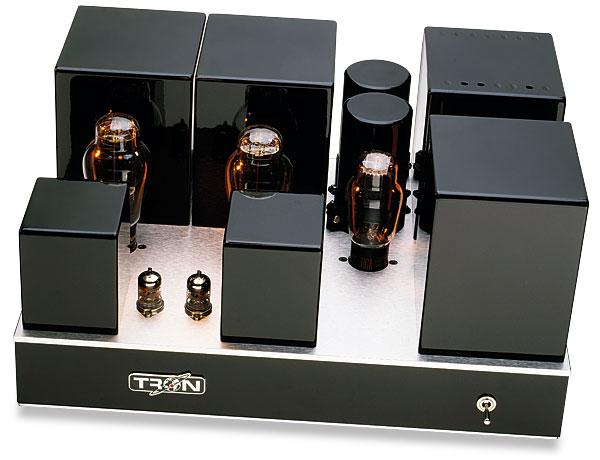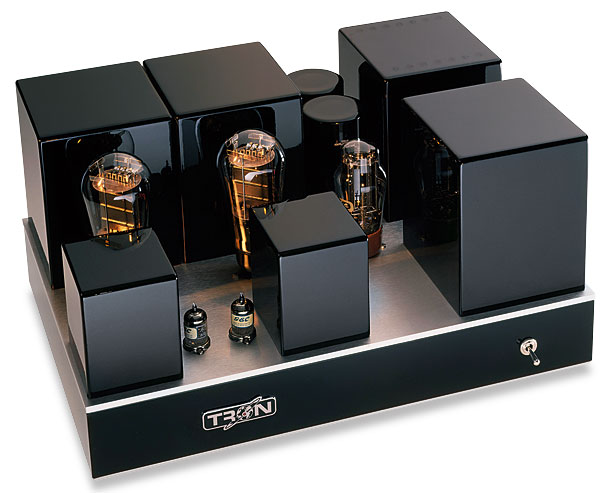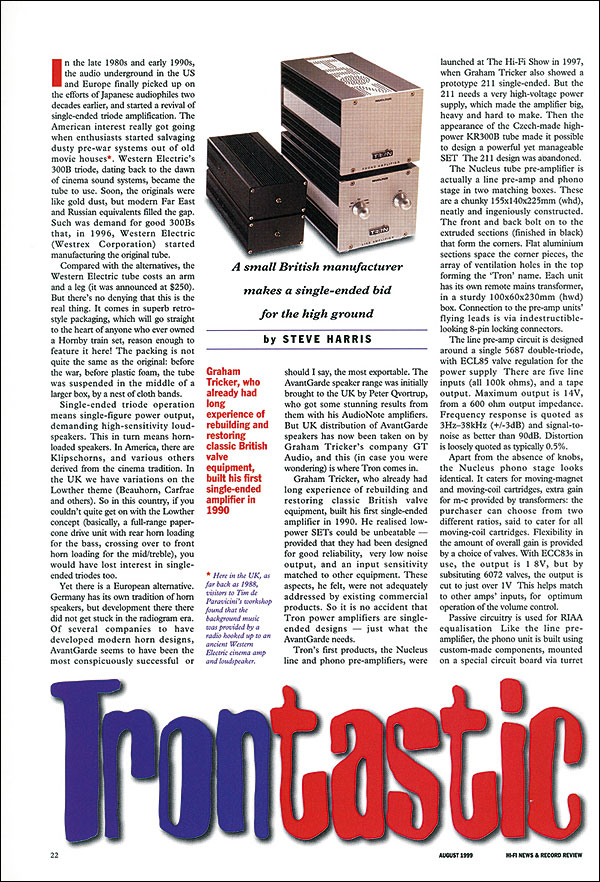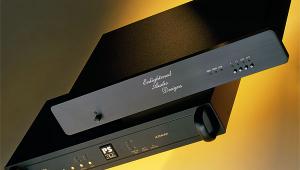Tron Nucleus/PX25/300B Amplifiers

 Steve Harris on a small British manufacturer making a bid for the high ground with a single-ended amplifier offering a choice of output valves
Steve Harris on a small British manufacturer making a bid for the high ground with a single-ended amplifier offering a choice of output valves
In the late 1980s and early 1990s, the audio underground in the US and Europe finally picked up on the efforts of Japanese audiophiles two decades earlier, and started a revival of single-ended triode amplification. The American interest really got going when enthusiasts started salvaging dusty pre-war systems out of old movie houses. Western Electric's 300B triode, dating back to the dawn of cinema sound systems, became the tube of choice.
Soon, the originals were like gold dust, but modern Far East and Russian equivalents filled the gap. Such was the demand for good 300Bs that, in 1996, Western Electric (Westrex Corporation) set about manufacturing the original tube once more. Compared with the alternatives on the market, the Western Electric tube costs an arm and a leg (it was announced at $250). However, there's no denying that this is the real thing.
Set And Match
Single-ended triode operation means single-figure power output, demanding high-sensitivity speakers. This means horn-loaded designs. In the US there are Klipschorns, and various others derived from the cinema tradition. In the UK we have variations on the Lowther theme (Beauhorn, Carfrae and others). So in this country, if you couldn't get on with the Lowther concept (a full-range paper-cone drive unit with rear horn loading for the bass, crossing over to front horn loading for the mid/treble), you would have lost interest in single-ended triodes too.

Yet there is a European alternative. Germany has its own tradition of horn speakers, but development there did not get stuck in the radiogram era. Of several companies to have developed modern horn designs, AvantGarde seems to have been the most conspicuously successful or should I say, the most exportable. UK distribution of AvantGarde speakers has now been taken on by Graham Tricker's company GT Audio, and this is where Tron comes in.
Graham Tricker built his first single-ended amplifier in 1990. He realised low-power SETs could be unbeatable – provided that they had been designed for good reliability, very low noise output, and an input sensitivity matched to other equipment. These aspects, he felt, were not adequately addressed by existing commercial products. So it is no accident that Tron power amps are single-ended designs – just what the AvantGarde speakers need.
Tron's first products, the Nucleus line and phono preamplifiers, were launched at The Hi-Fi Show in 1997, when Graham Tricker also showed a prototype 211 single-ended design. But the 211 requires a very high-voltage power supply, which made the amplifier big, heavy and hard to make. Then the appearance of the Czech-made high-power KR300B tube made it possible to design a powerful yet manageable SET and the 211 amp was abandoned.
Boxing Clever
The Nucleus tube preamp is actually a line preamp and phono stage in two matching boxes. These measure a chunky 155x140x225mm (whd), and are neatly and ingeniously constructed. The front and back bolt on to the extruded sections (finished in black) that form the corners. Flat aluminium sections space the corner pieces, the array of ventilation holes in the top forming the 'Tron' name. Each unit has its own remote mains transformer, in a sturdy 60x100x230mm (whd) box. Connection to the preamp units' flying leads is via indestructible-looking 8-pin locking connectors.
The line preamp circuit is designed around a single 5687 double-triode, with ECL85 valve regulation for the power supply. There are five line inputs (all 100kohm), and a tape output. Maximum output is 14V, from a 600ohm output impedance. Frequency response is quoted as 3Hz-38kHz (±3dB) and signal-to-noise as better than 90dB. Distortion is loosely quoted as 'typically 0.5%'.

Phono Flexibility
Apart from the absence of knobs, the Nucleus phono stage looks identical. It caters for MM and MC cartridges, extra gain for MC being provided by transformers. What's more, the purchaser is able to choose from two different ratios, said to cater for all MC pick-ups. Flexibility in the amount of overall gain is provided by a choice of valves. With ECC83s in use, the output is 1.8V, but by substituting 6072 valves, the output is cut to just over 1V. This helps match to other amps' inputs, for optimum operation of the volume control.
Passive circuitry is used for RIAA equalisation. Like the line preamp, the phono unit is built using custom-made components. These are mounted on a special circuit board via turret tags, using hardwiring between components. Once again, the power supply is regulated using an ECL85 valve. In practice, GT Audio will be able to advise and make sure the phono stage is set optimally for the customer's cartridge.
Single-Ended Power
In Tron's Type 300B amplifier, a 5842 triode valve drives the directly-heated 300B output tube, connected to loudspeakers via a specially-made output transformer from Partridge. There are no capacitors in the signal path, nor any overall feedback. Meanwhile, the power supply rectifier is a 5Z3 valve, connected in turn to a Pi filter.

The valves are heated with DC to eliminate hum problems. Although high-sensitivity horns will make the most of a few watts of amplifier power, by the same token they reveal any noise problem in the amplifier, which might have remained inaudible with conventional boxes. It's claimed that in the Tron Type 300Bs, hum on the output stage has been reduced to around 5mV peak-to-peak, low enough to be inaudible even when using loudspeakers of well over 100dB/1W/1m sensitivity.
Custom-made components are used, hardwired between stages using copper wire. Traditional hardwiring methods employed for all signal wiring can be seen in the 'internal' view. This also shows the all-aluminium chassis construction: the black-finished case members are made from a custom extrusion and are sandwiched between the top and bottom plates, which are brush-finished and anodised. Transformer covers are also of aluminium. The unit measures 235x460x335mm (whd), and its functional, well-proportioned looks are complemented by the high standard of finish and, finally, by the delightful Tron badge in which a red orbiting electron (or is it a moon?) is actually the power-on LED. On the back is an IEC mains inlet, one pair of good-quality phonos for the input, along with two sets of high-grade 4mm binding posts for speaker connection.
Power output is specified as 9W per channel, this being the limit for a Western Electric 300B operated within the maker's specifications. However, it can be supplied with Kron 300B valves, claimed to produce 18W/ch.

























































